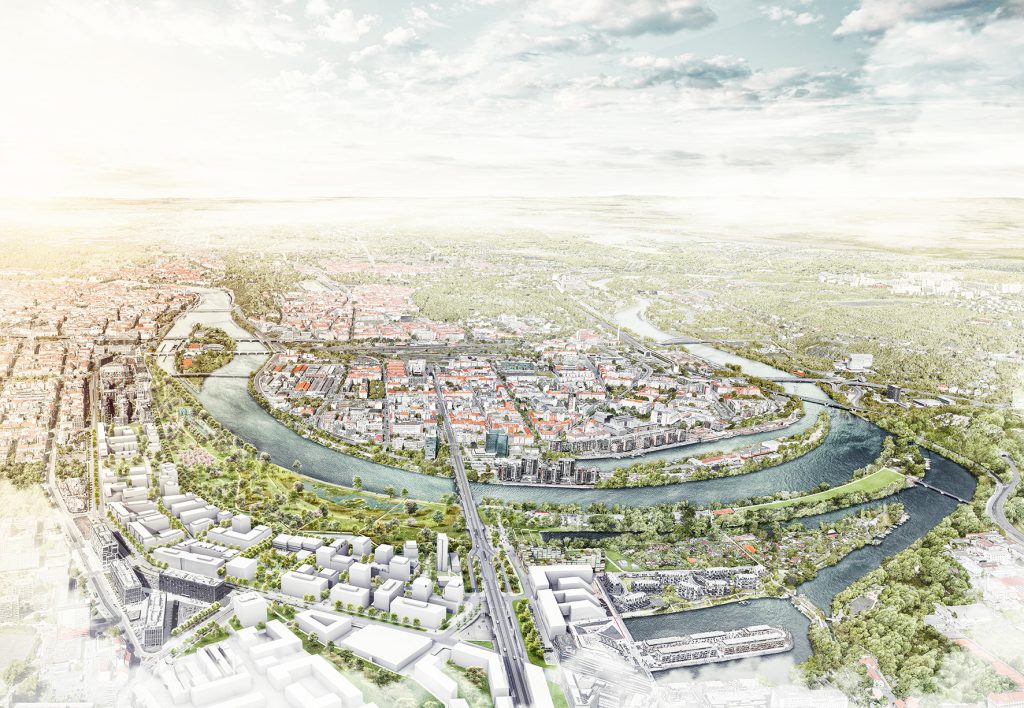
The Prinzessinnengarten has become a symbol of how urban community property has to be discussed anew.
Billboard
Skyscrapper
Halfpage
What used to be neglected badlands is a green island now. Residents started the Berlin Prinzessinengarten then years ago. But it is about far more than urban agriculture: here, creative “space pioneers” fight against gentrification. The Prinzessinnengarten has become a symbol of how urban community property has to be discussed anew.
Another hot summer day is heating up the concrete cityscape of Berlin. Exhaust fumes are fogging the air, the tarmac streets are steaming and the townsfolk is trudging through the hustle and bustle of the city. But the Prinzessinnengarten at Moritzplatz Square offers an entirely different reality: hobby gardeners are tending to their fruit and vegetable plants that turn the Prinzessinnengarten into a green intra-urban island. While a group of teenagers is browsing through a book exchange shelf, visitors of the garden café enjoy its diverse menu. A herbage school, an open bike workshop, regular screen printing days and numerous other activities account for the urban garden’s program. It is about sharing skills and knowledge and about developing new visions of cohabitation.
It’s more than just urban agriculture!
The non-profit society “Nomadisch Grün” and the association “Common Grounds” project initiated Prinzessinnengarten. Robert Shaw and Marco Clausen who had the idea of a kitchen garden in Berlin ten years ago. Out of this idea was born their concept. They had in mind a sustainable and garden-oriented city that would actively contribute to a better climate.
But the current discussion about the Prinzessinnengarten focuses on more than ecological sustainability. Acute building pressure and the proceeding privatization of the city pose a risk for local initiatives and and their leeway. Like most other urban gardens in Berlin, the Prizessinnengarten is fighting for its existence. In 2012, the conflict between the search for investors and the preservation of the self-governing neighborhood reached its peak: more than 30.000 supporters could barely prevent the privatization of the Prinzessinnengarten’s area.
The 6.000 square meter plot remains temporal though: its buildings consist of cargo containers, the plants are growing in reused boxes or rice bags. The Prinzessinnengarten is always ready to go. But where to?
Is the end near?
The current user contract expires at the end of this year. Prinzessinnengarten’s users are expecting a one-year extension by the city council. But some of the users oppose the idea if temporary interim use and propose a creative counter concept. The so-called “Wunschproduktion” is based on the principles of long term lease. The Prinzessinnengarten is to become actual common property and a place that allows its users to participate. Looking forward, it is experimenting with community-oriented and non-commercial forms of urbanity. Its main goal is cultural, social and ecological diversity – witch seems to be hard to integrate into Berlin’s municipal politics.
An arbor as a “Symbol for Staying”
The architects quest, FATkoehl and one of the initiators, Marco Clausen give an answer to the question who makes and retains urban space. As a “symbol for staying” they added a three-story wood frame construction to the garden. Trainees of the Knobelsdorff School, students of the Technical University and the gardening team constructed the structure. The arbor now serves as an experimental place for collective learning and exchange as well as a structural intervention to symbolize the conflict between the temporal interim use and the desire to finally take root.
We are in urgent need a new model of how we design city and society in the future. Temporal area uses need to get the possibility of developing longstanding visions and becoming part and parcel of urban planning as a whole. Only then will we be able to maintain the city as a diverse, sustainable and livable space in the long run.












